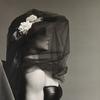'A woman...a damn good painter': Traveling Retrospective Shines Spotlight on Lee Krasner
- BERN, Switzerland
- /
- January 27, 2020
She was one of the most determined artists of the 20th century: American Lee Krasner (1908-1984). She was a pioneer of Abstract Expressionism and constantly reinvented herself throughout her life, something expressed in the enormous energy and variety of her works. In a major traveling retrospective, the Zentrum Paul Klee in the Swiss city of Bern is showing some 60 works from internationally significant museums and collections, including the artist’s most important drawings, paintings and collages made between the 1920s and the 1970s. Lee Krasner. Living Colour is on view in Bern from Feb. 7 to May 10, 2020.
“I was a woman, Jewish, a widow, a damn good painter, thank you, and a little too independent," said Krasner of her late appreciation.
Lee Krasner was born in Brooklyn in 1908. Her parents, of Russian-Jewish extraction, had immigrated to the U.S. a few months previously. By the age of fourteen she was already pursuing her declared goal of becoming an artist, by applying to the only school in New York at the time that offered art classes for girls. There was no artistic Damascus-Road experience, no encounter that might have spurred on her career aspiration – just an unswerving will. Caustic, disputatious, unique, candid, brilliant – these are the words that colleagues and family used to describe Lee Krasner. Her training was traditional, drawing nudes from life models and later following Cubist ideas, but her studies also propelled her into the center of a new artistic movement in the U.S.: Abstract Expressionism. The new artistic trend developed throughout the 1940s, principally in New York, bringing together such diverse artists as Willem de Kooning, Mark Rothko and Jackson Pollock. She married Pollock in 1945 and for a long time stood in his shadow. Towards the end of her life, her own artistic accomplishments were increasingly recognised. She is one of the few women artists to have been awarded a solo exhibition by the Museum of Modern Art in New York.
‟Lee Krasner’s paintings truly are magnificent! She always found new ways to create abstract, expressionistic works that radiate an incredible liveliness and power,” noted Fabienne Eggelhöfer, Chief Curator Zentrum Paul Klee.
As a pioneer of Abstract Expressionism, Lee Krasner was already experimenting with abstract painting in the 1940s, and making colour the subject of her art. It was around this time that she produced her first series of works, entitled Little Images. The small-format works from the 1940s form the starting-point for this exhibition.
Monumental paintings from 1960
In 1957 Lee Krasner moved into the studio previously occupied by Jackson Pollock, who had died in a car accident a year before. The studio in Springs was more spacious, and Krasner used the opportunity to work in large formats. She jumped in the air holding long-handled brushes and from now on, deploying her whole body, painted works that were more than 2.5 metres high and often over 4 metres wide. The monumental groups of works from the 1960s made at this time are among the highlights of the exhibition. Krasner made her first large-format works, the Umber Series (1960) at night when she was suffering from chronic insomnia. Subsequently she reduced her colour palette to umber and white, as she didn’t want to work with colours under artificial light. In 1962, colour enters Krasner’s work again. While the artist retained the rhythmic structures of the Umber Series, the paintings, which now used powerful colours, became dramatically expressive, and the imposing group of works of the Primary Series came into being. Krasner never made sketches or studies for these oversized formats. The work had to come from within: “There’s a blank, and something begins to happen, and the hope is that it comes through.”
Collages
Lee Krasner never followed a particular style, but constantly went on reinventing herself. Her working process was cyclical: sometimes she left her works to rest for several days, sometimes she destroyed what she didn’t like to create something new from it later. Dissatisfied with a series of drawings, she pulled them down from the wall and left them lying in her studio. When she stepped back into the studio some weeks later she was surprised: “I saw a lot of things there that began to interest me. I began picking up torn pieces of my own drawings and re-gluing them.” Apart from paper she used her own scraps of canvas as well as Pollock’s in her collages, as in the work Bald Eagle (1955) which is shown in the exhibition.
For this extensive exhibition the Zentrum Paul Klee has been able to access a large number of valuable loans from 18 internationally significant museums and collections, which are being shown for the first time in this arrangement. They include works from the Metropolitan Museum, the Museum of Modern Art and the Whitney Museum of American Art in New York, the Hirshhorn Museum in Washington D.C. and the National Gallery of Victoria in Melbourne. The exhibition also features 33 works from American private collections which are seldom shown in public.
“I am extraordinarily delighted that we are able – more than thirty years after the legendary Krasner-Pollock double exhibition in the Kunstmuseum Bern in 1989 – we are able to show the first major retrospective by this exceptional artist here in Bern,” said Nina Zimmer, Director Kunstmuseum Bern – Zentrum Paul Klee.
Lee Krasner. Living Colour is curated and organised by the Barbican Centre, London in cooperation with the Schirn Kunsthalle Frankfurt, the Zentrum Paul Klee, Bern and the Guggenheim, Bilbao. The curator in the Zentrum Paul Klee responsible for the exhibition is Fabienne Eggelhöfer, Chief Curator / Head of Collection Exhibitions Research.
The exhibition travels next to the Guggenheim Museum in Bilbao, Spain, May 29 to Sept. 6, 2020.

100x100_c.jpg)






![Peter Paul Rubens (Flemish, 1577–1640), After Titian (Tiziano Vecelli) (Italian [Venetian], c. 1488–1576), Rape of Europa, 1628–29. Oil on canvas, 71 7/8 x 79 3/8 in. Peter Paul Rubens (Flemish, 1577–1640), After Titian (Tiziano Vecelli) (Italian [Venetian], c. 1488–1576), Rape of Europa, 1628–29. Oil on canvas, 71 7/8 x 79 3/8 in.](/images/c/e2/2e/Jan20_Rape_of_Europa100x100_c.jpg)







